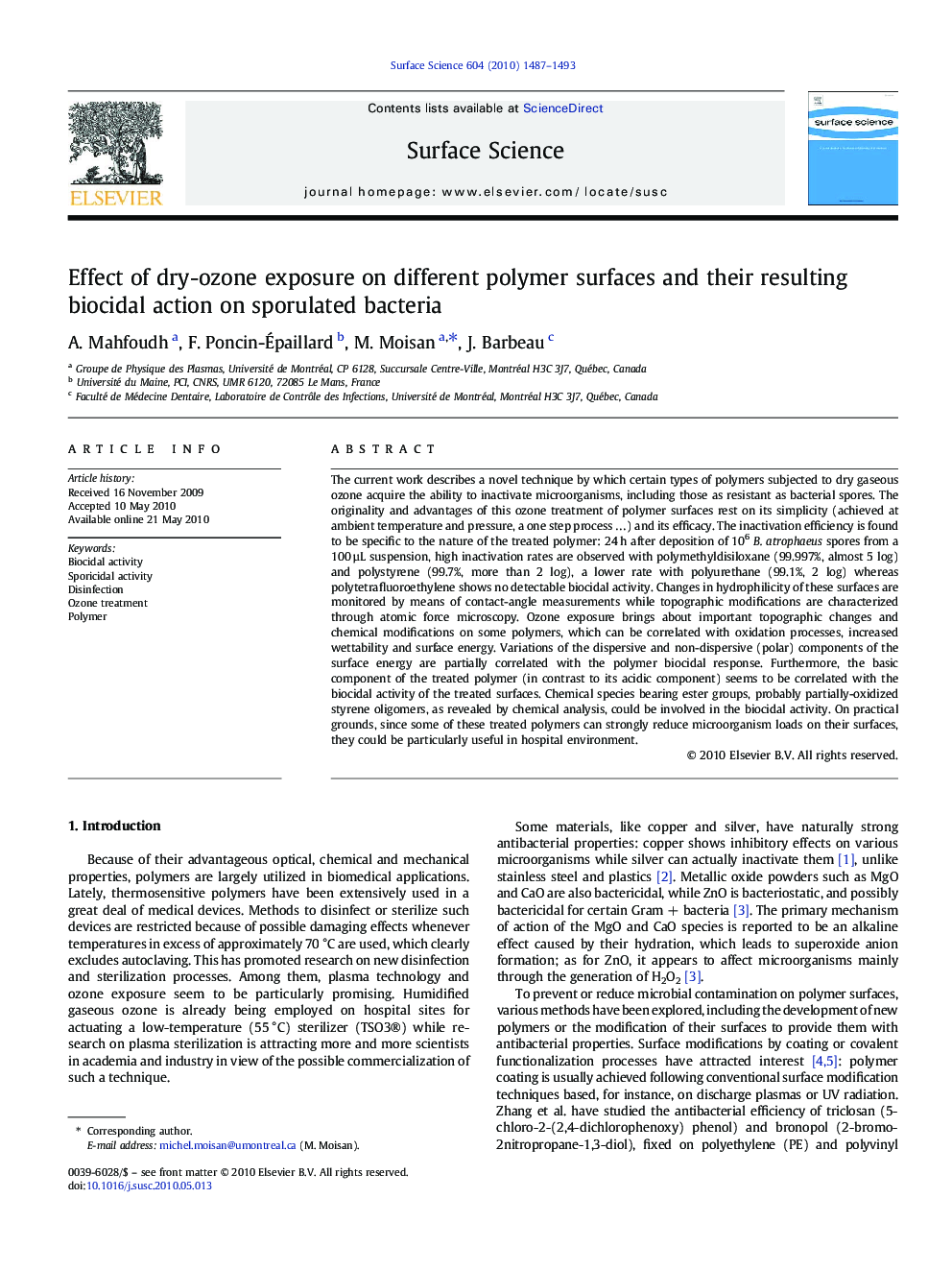| کد مقاله | کد نشریه | سال انتشار | مقاله انگلیسی | نسخه تمام متن |
|---|---|---|---|---|
| 5423078 | 1507950 | 2010 | 7 صفحه PDF | دانلود رایگان |
عنوان انگلیسی مقاله ISI
Effect of dry-ozone exposure on different polymer surfaces and their resulting biocidal action on sporulated bacteria
دانلود مقاله + سفارش ترجمه
دانلود مقاله ISI انگلیسی
رایگان برای ایرانیان
کلمات کلیدی
موضوعات مرتبط
مهندسی و علوم پایه
شیمی
شیمی تئوریک و عملی
پیش نمایش صفحه اول مقاله

چکیده انگلیسی
The current work describes a novel technique by which certain types of polymers subjected to dry gaseous ozone acquire the ability to inactivate microorganisms, including those as resistant as bacterial spores. The originality and advantages of this ozone treatment of polymer surfaces rest on its simplicity (achieved at ambient temperature and pressure, a one step process â¦) and its efficacy. The inactivation efficiency is found to be specific to the nature of the treated polymer: 24 h after deposition of 106B. atrophaeus spores from a 100 µL suspension, high inactivation rates are observed with polymethyldisiloxane (99.997%, almost 5 log) and polystyrene (99.7%, more than 2 log), a lower rate with polyurethane (99.1%, 2 log) whereas polytetrafluoroethylene shows no detectable biocidal activity. Changes in hydrophilicity of these surfaces are monitored by means of contact-angle measurements while topographic modifications are characterized through atomic force microscopy. Ozone exposure brings about important topographic changes and chemical modifications on some polymers, which can be correlated with oxidation processes, increased wettability and surface energy. Variations of the dispersive and non-dispersive (polar) components of the surface energy are partially correlated with the polymer biocidal response. Furthermore, the basic component of the treated polymer (in contrast to its acidic component) seems to be correlated with the biocidal activity of the treated surfaces. Chemical species bearing ester groups, probably partially-oxidized styrene oligomers, as revealed by chemical analysis, could be involved in the biocidal activity. On practical grounds, since some of these treated polymers can strongly reduce microorganism loads on their surfaces, they could be particularly useful in hospital environment.
ناشر
Database: Elsevier - ScienceDirect (ساینس دایرکت)
Journal: Surface Science - Volume 604, Issues 17â18, 30 August 2010, Pages 1487-1493
Journal: Surface Science - Volume 604, Issues 17â18, 30 August 2010, Pages 1487-1493
نویسندگان
A. Mahfoudh, F. Poncin-Ãpaillard, M. Moisan, J. Barbeau,